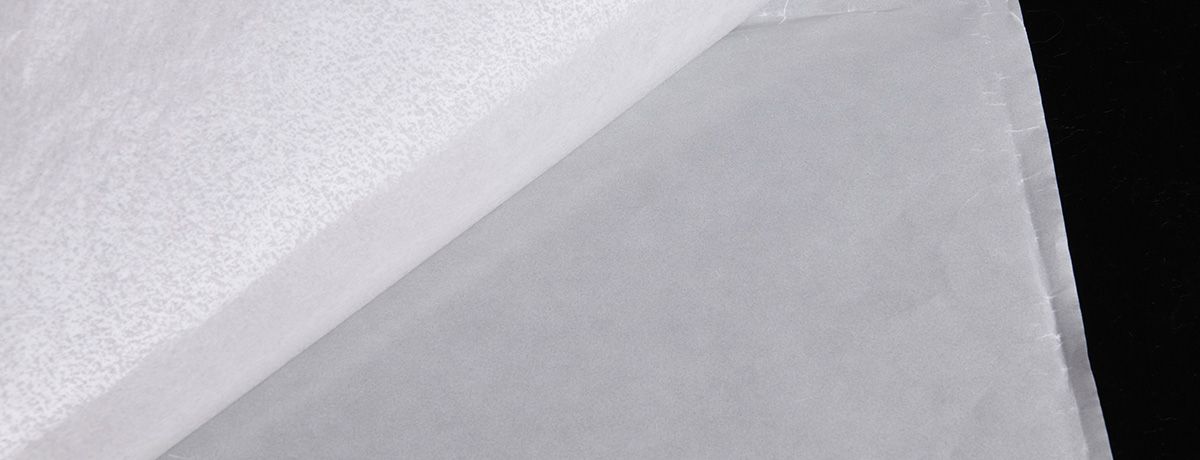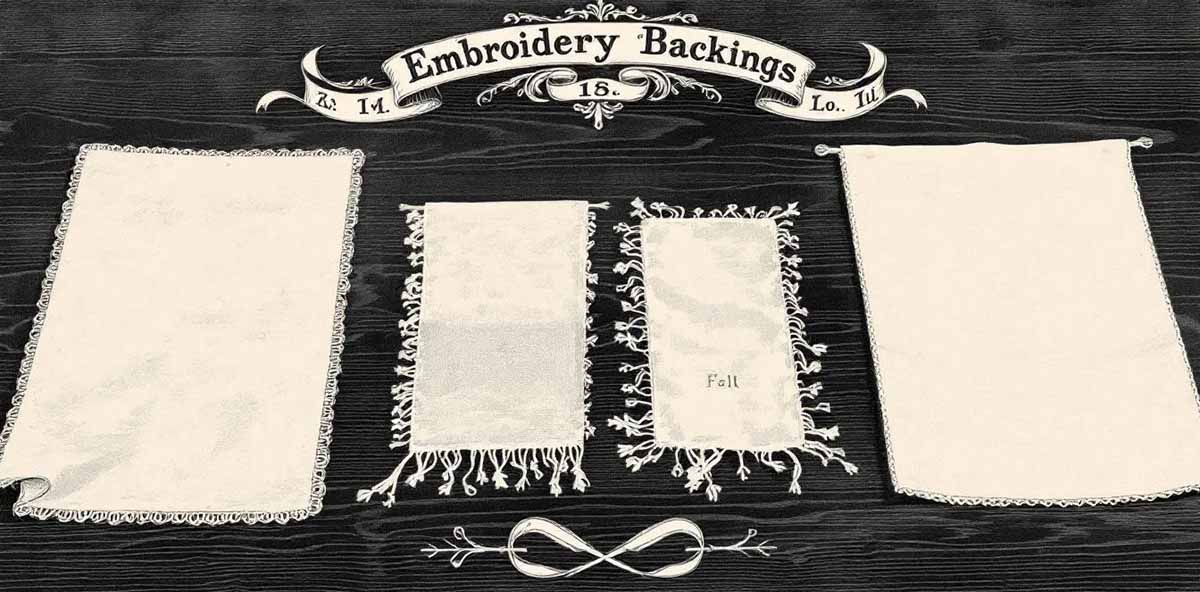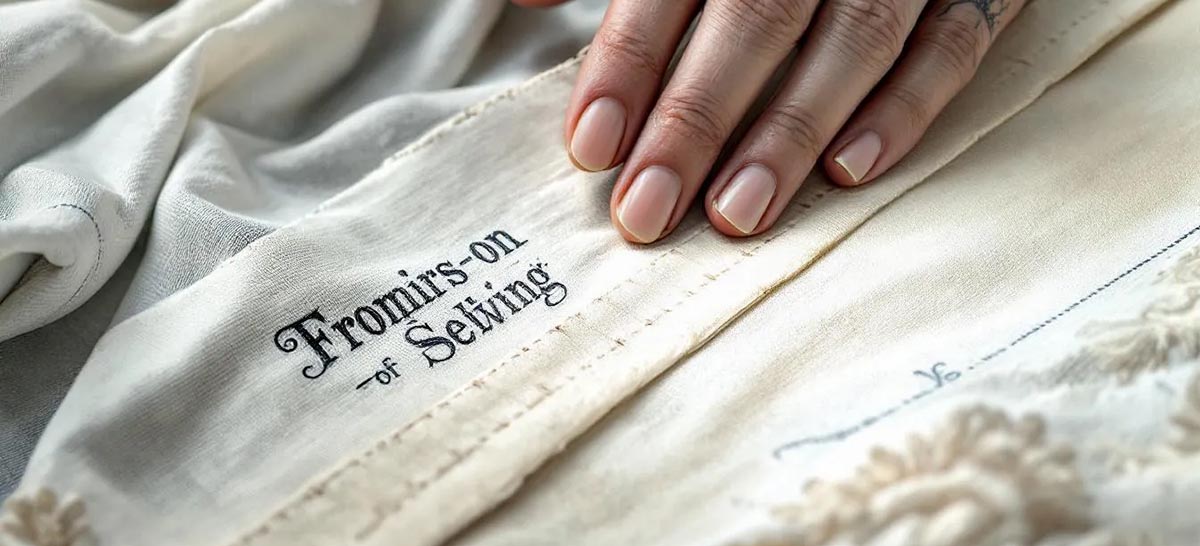Top Backing for Embroidery: Choose the Perfect Stabilizer for Your Projects

Need to choose the right backing for embroidery? You’re in the right place. Embroidery backings provide crucial support to your fabric, ensuring your designs stay crisp and intact. This guide will help you understand the types of backings and how to pick the perfect one for your project.
Key Takeaways
-
Choosing the right embroidery backing is crucial for achieving professional results, as it affects the durability and appearance of the finished project.
-
Different fabrics require specific types of backings: tear-away for stable fabrics, cutaway for delicate designs, and fusible mesh for stretch fabrics, ensuring proper support during and after embroidery.
-
For projects involving sensitive skin, select soft, breathable backings like Tender Touch or Cloud Cover Stitch to enhance comfort while providing adequate support.
Understanding Embroidery Backings

Embroidery backings are the foundation of any successful embroidering project. They prevent the stitches from coming undone and enhance the overall comfort of the finished piece. Unlike interfacing, which is applied before stitching, embroidery backings are ironed on after the stitching is complete. This distinction is crucial for achieving the desired results, especially when working with various fabric types.
Choosing the correct backing for embroidery ensures a professional finish. Whether you’re working on a delicate silk blouse or a sturdy denim jacket, the right backing can significantly influence the final appearance and durability of your embroidery. Understanding the role and types of embroidery backings is the first step in mastering your craft.
Role of Embroidery Stabilizers
Embroidery stabilizers, also known as backings, provide essential support during the embroidery process. They help maintain fabric tension, prevent distortion, and ensure precise stitch placement. Without a stabilizer, fabrics, especially stretch fabrics, can easily become distorted, resulting in uneven and unattractive designs.
Selecting the right stabilizer preserves the integrity of your embroidery designs through multiple wash cycles. High-quality stabilizers can make a noticeable difference in the final outcome of your project, ensuring that your stitches remain crisp and your design retains its shape over time.
A proper stabilizer supports the fabric during stitching and enhances the quality of the embroidery project. Whether you’re working with machine embroidery or hand embroidery, stabilizers help you stabilize and achieve consistent and professional results.
Types of Embroidery Backings
Embroidery backings come in various types, each suited for different fabric types and design needs. Tear-away backings are designed for easy removal after stitching, making them ideal for stable, non-stretch fabrics. They provide temporary support and can be easily torn away without damaging the fabric, making them perfect for simpler designs.
Cutaway backings offer lasting support and are ideal for thin materials. Their benefits include:
-
Remaining on the fabric after stitching, providing long-term stability
-
Preventing the design from stretching during wear and washing
-
Being a great choice for intricate designs
-
Providing additional support for fabrics that require it
Water-soluble backings dissolve in water, making them perfect for delicate fabrics and intricate designs that require a smooth finish. These backings are ideal for projects where you don’t want any visible backing left after the embroidery is complete.
Understanding the different types of embroidery backings allows you to choose the best option for your specific project needs.
Choosing the Right Embroidery Backing for Your Fabric
The correct embroidery backing can significantly enhance the durability and finish of your projects. The correct type of backing material can influence the final appearance and longevity of your designs. Thus, selecting the appropriate backing based on fabric type and project requirements is crucial.
The following subsections explore the best backings for various fabric types: stretch fabrics, lightweight and sheer fabrics, and heavyweight fabrics. Understanding the specific needs of each fabric type helps you make informed choices, elevating the quality of your embroidery work.
Backings for Stretch Fabrics
Stretch fabrics, like t-shirts and athletic wear, require special attention to prevent distortion and puckering during embroidery. Fusible mesh backings are particularly effective for these fabrics, as they prevent distortion during stitching and maintain the fabric’s flexibility. Cutaway backings are also beneficial, providing long-term support and ensuring the design remains stable during wear and washing.
Performance wear backings, like ProStitch, are designed to maintain stretch and shape for athletic fabrics. Lightweight tear-away backings can also be used for stretch fabrics, offering easy removal without damaging the material.
These specialized backings are ideal for garments like baby clothing, sportswear, and lingerie. Stabilizing stretchy stretch fabrics requires a backing that complements the fabric’s stretch characteristics.
Backings for Lightweight and Sheer Fabrics
Lightweight and sheer fabrics require soft, non-bulky backings to provide necessary support without adding significant weight. Sulky Tender Touch is an excellent choice for these fabrics, as it offers support without added bulk. A lightweight polymesh backing can also be beneficial, providing stability while remaining virtually invisible.
Soft, non-woven backings like Soft n’ Sheer are ideal for sheer fabrics, ensuring stability without adding unnecessary weight and maintaining the appropriate density. Wash-away stabilizers are another great option to find for delicate projects, as they dissolve in water, leaving a smooth finish.
The right backing for lightweight and sheer fabrics ensures stability and a professional finish, with all the necessary details, making the overall look lighter.
Backings for Heavyweight Fabrics
Heavyweight fabrics, such as denim and towels, require sturdy backings to support the weight and thickness of the material. Heavier-duty cutaway backings are recommended for these fabrics, providing robust support for intricate designs. Fusible interfacing can also add necessary stability to thicker materials, ensuring the embroidery design remains intact during wear and washing.
For towels and heavyweight fabrics, consider the following backing and stabilizer options:
-
A strong tear-away backing offers ample support for towels while allowing for easy removal after the embroidery is complete.
-
Dense embroidery on heavyweight fabrics benefits from stabilizers like tear-away or cutaway types, ensuring optimal stability and preventing distortion.
-
Using the correct backing for heavyweight fabrics ensures durable and professional results.
Special Considerations for Sensitive Skin
For garments meant for people with sensitive skin, select backings that provide comfort and prevent irritation. Tender Touch is a lightweight, permanent stabilizer designed to protect sensitive skin from the roughness of embroidery stitches. This backing is highly praised for its gentle feel against the skin, making it a suitable choice for projects requiring comfort.
Opting for backings made from soft and breathable materials can prevent skin irritation and enhance the overall comfort of the garment. Selecting the right embroidered embroidery backing ensures comfort, especially for frequently worn garments.
Cloud Cover Stitch
Cloud Cover Stitch is a stabilizer designed to provide a soft barrier, making it suitable for sensitive skin. This stabilizer offers comfort to the wearer, ensuring that the roughness of the embroidery stitches doesn’t cause irritation. It’s particularly beneficial for garments that will be worn close to the skin, such as baby clothes and lingerie.
However, while Cloud Cover Stitch is effective for comfort in this area, it may not withstand multiple wash cycles. This limitation means that while it provides an excellent solution for sensitive skin, I recommend that it may require a bit more frequent reapplication or replacement to maintain its effectiveness.
Understanding these pros and cons can help you choose options and make an informed decision about whether to subscribe to Cloud Cover Stitch as the right choice for your project.
Practical Tips for Using Embroidery Backings

Proper application and removal techniques for embroidery backings enhance the quality of your work. Using a product like Pellon SF 101 can provide excellent stability when applied with a heat press. Ensuring consistent fusibility and strong adhesion can improve the structure of light to medium-weight items.
In the following subsections, we’ll cover practical tips for applying iron-on backings, removing excess backing, and maintaining stability during washing. Good backing techniques enhance the overall quality of your embroidery work. Following the right steps ensures your embroidery projects maintain their beauty and durability over time.
Iron-on Backing Application
Selecting the appropriate iron-on backing based on fabric type and project needs ensures compatibility. Pre-wash and iron your fabric to remove any residues or creases that may interfere with adhesion.
Place the iron-on backing onto the wrong side of the fabric with the adhesive side facing down. Use a hot iron without steam to press down on the backing for the recommended time to activate the adhesive. Allow the fabric to cool completely before removing the iron or handling it to ensure the backing adheres properly.
After apply:
-
Check that the edges of the backing are securely adhered.
-
Trim any excess if necessary.
-
Test the adhered backing by gently tugging on the fabric to ensure it stays in place during stitching.
Removing Excess Backing
Removing excess backing enhances the final appearance of your sewing embroidery. Use a pair of sharp scissors to carefully cut away any tear-away backing material without damaging the embroidery. For tear-away backings, gently pull them away from the fabric to avoid distortion of the stitches and leave the final product removed looking polished.
Gently pulling from the edges often yields the cleanest results without damaging the embroidery. Following these techniques ensures your embroidery projects look clean and professional, with no unsightly backing remnants.
Maintaining Stability During Washing
Durable backings maintain the stability of your embroidery through multiple washes. Cloud Cover Stitch tends to peel off after one wash and dry, indicating a challenge in maintaining stability. If you want your designs to stick, consider alternative options.
To ensure longevity, select backings that are known for their durability and can withstand repeated washing and wearing. This will help your embroidery projects stay beautiful and intact over time and allow you to embroider with confidence.
Summary
Understanding and choosing the right embroidery backing for your projects can make a world of difference in the final outcome. Whether you’re working with stretch fabrics, lightweight and sheer materials, or heavyweight fabrics, selecting the appropriate backing is essential for achieving professional and durable results. Additionally, considering special needs like sensitive skin can enhance the comfort and wearability of your embroidered garments.
As you embark on your embroidery journey, remember that the right backing can elevate your work from good to great. Experiment with different types and techniques to find what works best for your specific projects. With the knowledge and tips shared in this guide, you’re well-equipped to create stunning, long-lasting embroidery pieces that you can be proud of. Happy stitching!
Frequently Asked Questions
What is the main purpose of using embroidery backings?
The primary purpose of using embroidery backings is to support the fabric during stitching, ensuring that the embroidery remains secure and enhancing overall comfort.
What type of backing is best for stretchy fabrics?
Fusible mesh or cutaway backings are best for stretchy fabrics because they prevent distortion during stitching while maintaining the fabric's flexibility. This choice ensures a clean and professional finish.
How do I apply an iron-on backing correctly?
To apply an iron-on backing correctly, pre-wash and iron your fabric, then place the backing adhesive side down on the wrong side. Use a hot iron without steam to press down firmly for the recommended duration for best results.
What should I use for delicate and sheer fabrics?
For delicate and sheer fabrics, it's best to use soft, non-bulky backings such as Sulky Tender Touch or Soft n' Sheer. This approach ensures you provide the necessary support while maintaining the fabric's lightweight feel.
How can I maintain the stability of my embroidery through multiple washes?
To maintain the stability of your embroidery through multiple washes, use durable backings designed for longevity and avoid those that may not hold up through repeated cycles. This will ensure your designs remain intact and vibrant.
Contact MH
MH offer backing for embroidery. Please contact us for more details or inquiries. We're here to help!


